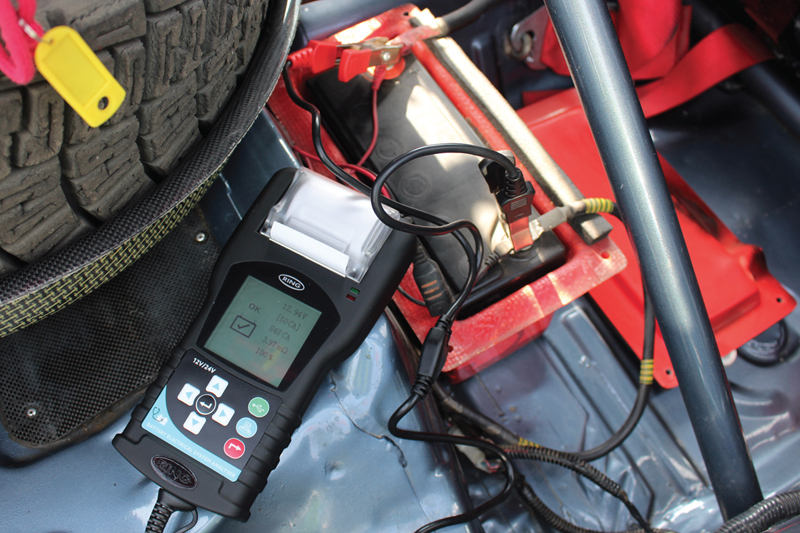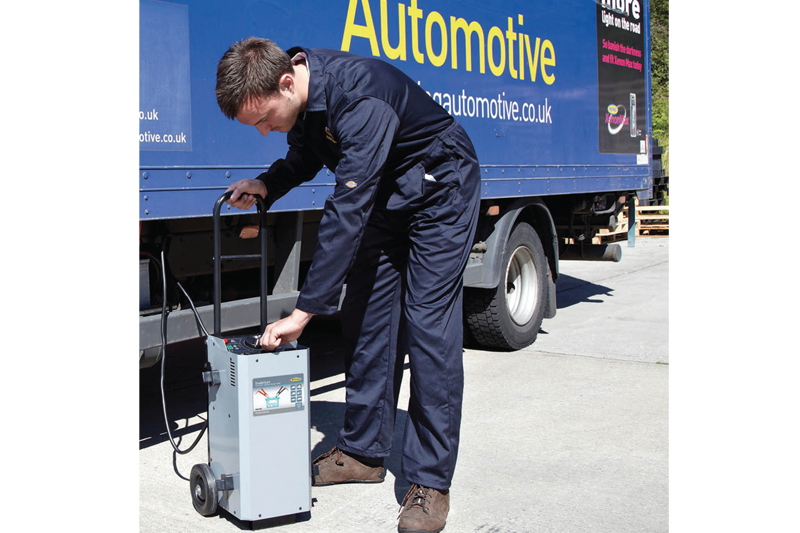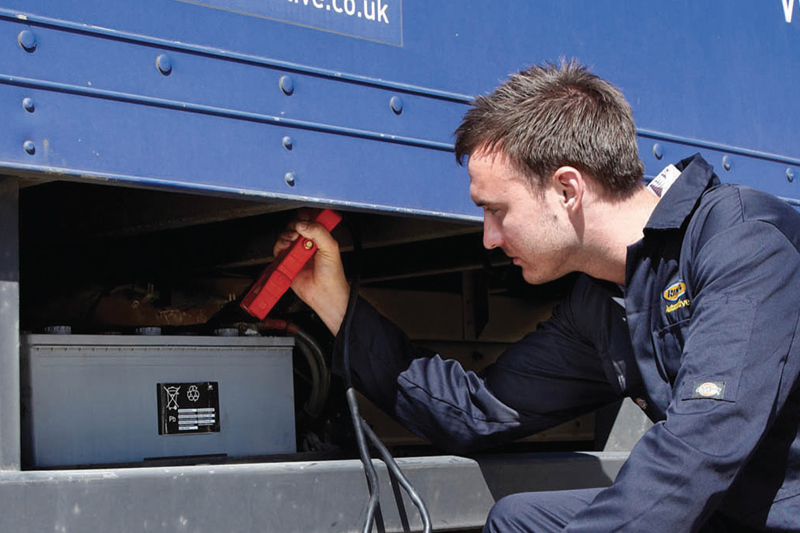
Jo Chapple, trade battery care product manager at Ring Automotive, outlines a number of key considerations for workshops to give technicians and fleet operators that reassurance when working through the colder weather.
A battery is the life force behind any CV, and so it’s essential to check and maintain it regularly to ensure it can reliably handle long journeys during harsher weather conditions. And with the cost-of-living crisis affecting every industry, it’s more important than ever that fleets can be checked over in the most cost-efficient way possible, using the most reliable and high- quality tools available, to minimise downtime and get vehicles back on the road as quickly as possible.
There are simple and speedy ways to ensure a truck’s battery is in good working order; graphical battery analysers are available to provide a complete health check of the battery and electrical systems of any 12v or 24v vehicle. Instead of an old-fashioned drop load tester, modern battery analysers with their microprocessors can analyse battery performance quicker, but also run a host of other diagnostic tests.
They can also detect battery charging problems by checking that alternator voltages fall within normal operating ranges and can check for potential starting problems by measuring battery voltage drop during engine cranking.
By investing in the very latest graphical battery analysers with the latest technology, technicians can diagnose faults quicker and easier than before, using features such as an intuitive graphical interface battery capacity test without applying a load, providing fast, accurate results.

Opt for an analyser that enables batteries to be tested in or out of the vehicle, with reverse polarity protection built in. As 24v vehicles comprise two 12v batteries connected, each battery should be tested individually to ensure an accurate diagnosis. When testing the alternator and starter motor on 24v vehicles, the two 12v batteries can be left in series.
Complete health check
These handy tools can also help with workshop efficiencies as fleet managers can input the vehicle registration details, and an official log of any test can be downloaded and stored, helping to pinpoint issues further down the line.
Units will store a high number of vehicle test results at any given time, allowing multi-vehicle testing before downloading, which is ideal for technicians of fleet operators. Results can often be printed using a built-in thermal printer or downloaded to a computer through a USB.

Some of the more advanced options will not only test the battery cranking performance, but also the alternator (including a diode ripple test), starter and earth system, providing a complete health check of the battery system to help technicians diagnose potential faults.
As low-battery performance is one of the most common underlying causes of other issues or faults with a vehicle, such as problems with ECU monitoring, Ring Automotive is advising that batteries are checked before any service, data upload or diagnostic work is carried out.
Max out with a multi-meter
As a backup to the discerning technician, it is useful to invest in a self-calibrating multimeter, offering all the functions of a normal multi-meter plus frequency measurement, the ability to check fuses in-situ and carry out parasitic drain testing. It is recommended to opt for a unit that uses graphical interfaces, making it easy to use and understand.

Some of the latest equipment on the market includes an innovative current test mode, allowing the technician to take amp readings directly at the fuse box without removing the fuses, saving time for workshops. They can also feature a voltage check, with a traffic light result indicator, giving an instant and easy-to-read assessment of the battery charge levels, with a multi-function tester assessing circuit voltages. This provides early indication of alternator or starter motor issues, quickly finds breaks in cables and faulty connections, can test operation of fuel injectors, check faulty sensors and more.









